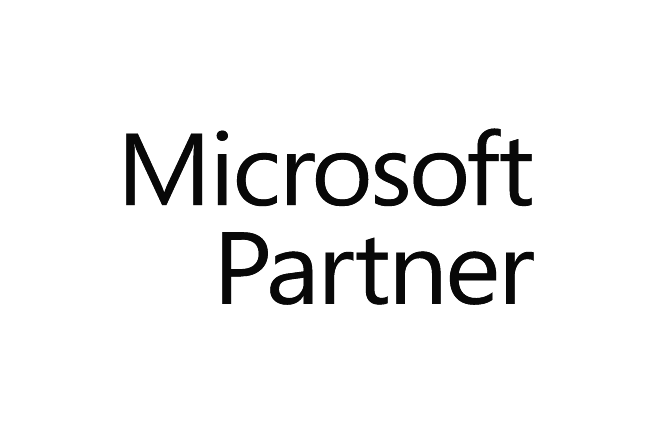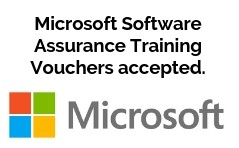
Microsoft Official Courses (MOC)
Course 20414 (20414C): Implementing an Advanced Server Infrastructure
За Курса (About this Course):
-
- Get hands-on instruction and practice planning, designing and deploying a physical and logical Windows Server® 2012 R2 enterprise infrastructure in this 5-day Microsoft Official course. This course is part two in a series of two courses that provides the skills and knowledge necessary to design and implement a Windows Server 2012 R2 infrastructure in an enterprise environment. The two courses collectively cover designing, planning, deploying, securing, monitoring, automating, and virtualizing an enterprise server infrastructure. This course covers the knowledge and skills to plan and implement a highly available, secure infrastructure with focus on Active Directory® Federation Service (AD FS), public key infrastructure (PKI), and Active Directory Rights Management Services (AD RMS). You will also learn the skills needed to plan and deploy virtual machines including self-service and automation of virtual machine deployments as well as planning and implementing a monitoring strategy that includes Microsoft® System Center 2012 R2-Operations Manager. This course maps directly to and is the preferred choice for hands-on preparation for Microsoft Certified Solutions Expert (MCSE): Exam 414: Implementing an Advanced Server Infrastructure, which is the fifth of five exams required for MCSE: Server Infrastructure certification. NOTE: Labs in this course are based on Windows Server 2012 R2 and System Center 2012 R2. This course is designed for experienced IT professionals who support medium to large enterprises and have experience administering Windows Server 2012 R2 and have an MCSA: Windows Server 2012 certification or equivalent skills.
Цели – Какво ще научите (Course Goals/Skills):
- Describe an enterprise data center.
- Plan and implement a server virtualization strategy using System Center 2012.
- Plan and implement the network and storage infrastructure required to deploy a virtualized server infrastructure.
- Plan and deploy virtual machines on Windows Hyper-V®.
- Plan and implement a virtualization administration solution by using System Center 2012.
- Plan and implement a server monitoring strategy using the Windows Server 2012 tools and using Microsoft System Center 2012 – Operations Manager.
- Plan and implement an application and a file services infrastructure that is highly available.
- Plan and implement a highly available server infrastructure by using the failover clustering features in Windows Server 2012.
- Plan and implement a business continuity strategy in a Windows Server 2012 environment.
- Plan and implement a PKI deployment, and plan and implement a certificate management solution.
- Plan and implement an AD FS server deployment and claims aware application access.
- Plan and implement Dynamic Access Control, Workplace Join and Work Folders.
- Plan and implement an AD RMS deployment, plan and manage AD RMS templates and access, and plan and implement external access to AD RMS services.
Курсът е предназначен за (Audience):
-
This course is intended for Information Technology (IT) professionals who are responsible for planning, designing and deploying a physical and logical Windows Server 2012 enterprise and Active Directory Domain Services (AD DS) infrastructures including the network services. Candidates would typically have experience of previous Windows Server operating systems and have Windows Server 2012 certification (MCSA) or equivalent skills.The secondary audience for this course will be candidates are IT professionals who are looking to take the exam 70-414: Implementing an Advanced Enterprise Server Infrastructure, as a stand-alone, or as part of the requirement for the MCSE certification.
Формат на курса


Език на курса (Course Language Option)


Може да изберете Език на който да се проведе обучението – български или английски. Всичките ни инструктори владеят свободно английски език.
Учебни Метериали: в електронен формат (Учебните материали са на английски), включени в цената с неограничен достъп.
Лабораторна среда: всеки курсист разполага със собствена лаб среда, където се провеждат упражненията, част от курса.


Продължителност (Course Duration):
- 5 работни дни (09:00 – 17:00)
или
- 40 уч.ч. обучение (теория и практика) в извънработно време с продължителност 4 седмици
- събота и неделя 10:00 – 14:00, 14:00 – 18:00, 18:00 – 22:00
- понеделник и сряда 19:00 – 23:00
- вторник и четвъртък 19:00 – 23:00
Плащане
За този курс може да ползвате и платите с Microsoft Software Assurance Training Vouchers
Заявка за издаване на фактура се приема към момента на записването на съответния курс.
Фактура се издава в рамките на 7 дни от потвърждаване на плащането.
Предстоящи Курсове (Next Class):
[tribe_events_list category=”microsoft”]
За повече информация използвайте формата за контакт.
Ще се свържем с Вас за потвърждаване на датите.
Предпоставки (Изисквания) за Участие (Prerequisites):
- An understanding of TCP/IP and networking concepts.
- An understanding of Windows Server 2012 and AD DS, including planning, designing and deploying.
- An understanding of scripts and batch files.
- An understanding of security concepts such as authentication and authorization.
- An understanding of deployment, packaging, and imaging tools.
- Experience working in a team or a virtual team.
- Achieved the Windows Server 2012 MCSA certification as well as information in the course 20413C: Designing and Implementing an Enterprise Server Infrastructure.
Курсът подготвя за следните сертификационни нива
-
70-414 Implementing an Advanced Server Infrastructure
- Може да се сертифицирате в нашия тест център с ваучер с отстъпка от цената на изпит.
Curriculum
- 13 Sections
- 62 Lessons
- 10 Weeks
- Module 1: Overview of Management in an Enterprise Data CenterIn this module, students will be able to describe the enterprise data center and how to use System Center 2012 to manage the enterprise data center.3
- Module 2: Planning and Implementing a Server Virtualization StrategyIn this module, students will be able to plan and implement a server virtualization strategy using System Center 2012.3
- Module 3: Planning and Implementing Networks and Storage for VirtualizationIn this module, students will be able to plan and implement the network and storage infrastructure required to deploy a virtualized server infrastructure.5
- 4.1Planning a Storage Infrastructure for Virtualization
- 4.2Implementing a Storage Infrastructure for Virtualization
- 4.3Planning and Implementing a Network Infrastructure for Virtualization
- 4.4Planning and Implementing Network Virtualization
- 4.5Lab : Planning and Implementing Virtual Networks and Storage
- Module 4: Planning and Deploying Virtual MachinesIn this module, students will be able to plan and deploy virtual machines on Windows Hyper-V.5
- Module 5: Planning and Implementing a Virtualization Administration SolutionIn this module, students will be able to plan and implement a virtualization administration solution by using System Center 2012.5
- 6.1Planning and Implementing Automation with System Center 2012
- 6.2Planning and Implementing System Center 2012 Administration
- 6.3Planning and Implementing Self-Service Options in System Center 2012
- 6.4Planning and Implementing Updates in a Server Virtualization Infrastructure
- 6.5Lab : Planning and Implementing an Administration Solution for Virtualization
- Module 6: Planning and Implementing a Server Monitoring StrategyIn this module, students will be able to plan and implement a server monitoring strategy using the Windows Server 2012 tools and using Operations Manager.5
- Module 7: Planning and Implementing High Availability for File Services and ApplicationsIn this module, students will be able to plan and implement an application and file services infrastructure that is highly available.4
- Module 8: Planning and Implementing a High Availability Infrastructure Using Failover ClusteringIn this module, students will be able to plan and implement a high availability server infrastructure by using the failover clustering features in Windows Server 2012.6
- 9.1Planning an Infrastructure for Failover Clustering
- 9.2Implementing Failover Clustering
- 9.3Planning and Implementing Updates for Failover Clusters
- 9.4Integrating Failover Clustering with Server Virtualization
- 9.5Planning a Multisite Failover Cluster
- 9.6Lab : Planning and Implementing a Highly Available Infrastructure Using Failover Clustering
- Module 9: Planning and Implementing a Business Continuity StrategyIn this module, students will be able to plan and implement a business continuity strategy in a Windows Server 2012 environment.5
- Module 10: Planning and Implementing an Public Key InfrastructureIn this Module, students will be able to plan and implement a PKI deployment, and plan and implement a certificate management solution.5
- 11.1Planning and Implementing Deployment of a Certification Authority
- 11.2Planning and Implementing Certificate Templates
- 11.3Planning and Implementing Certificate Distribution and Revocation
- 11.4Planning and Implementing Key Archival and Recovery
- 11.5Lab : Planning and Implementing an Active Directory Certificate Services Infrastructure
- Module 11: Planning and Implementing an Identity Federation InfrastructureIn this module, students will be able to plan and implement an AD FS server deployment and claims aware application access.5
- Module 12: Planning and Implementing Data Access for Users and DevicesIn this module, students will be able to plan and implement Dynamic Access Control (DAC), Workplace Join and Work Folders.5
- Module 13: Planning and Implementing an Information Rights Management InfrastructureIn this module, students will be able to plan and implement an AD RMS deployment, plan and manage AD RMS templates and access, and plan and implement external access to AD RMS services.6
- 14.1AD RMS Overview
- 14.2Planning and Implementing an AD RMS Cluster
- 14.3Planning and Implementing AD RMS Templates and Policies
- 14.4Planning and Implementing External Access to AD RMS Services
- 14.5Planning and Implementing AD RMS Integration with Dynamic Access Control
- 14.6Lab : Planning and Implementing an AD RMS Infrastructure








